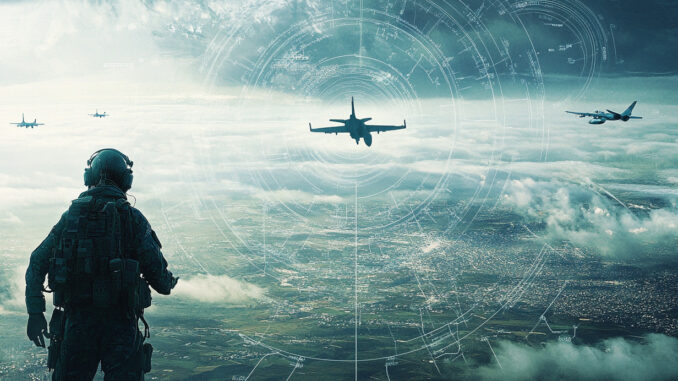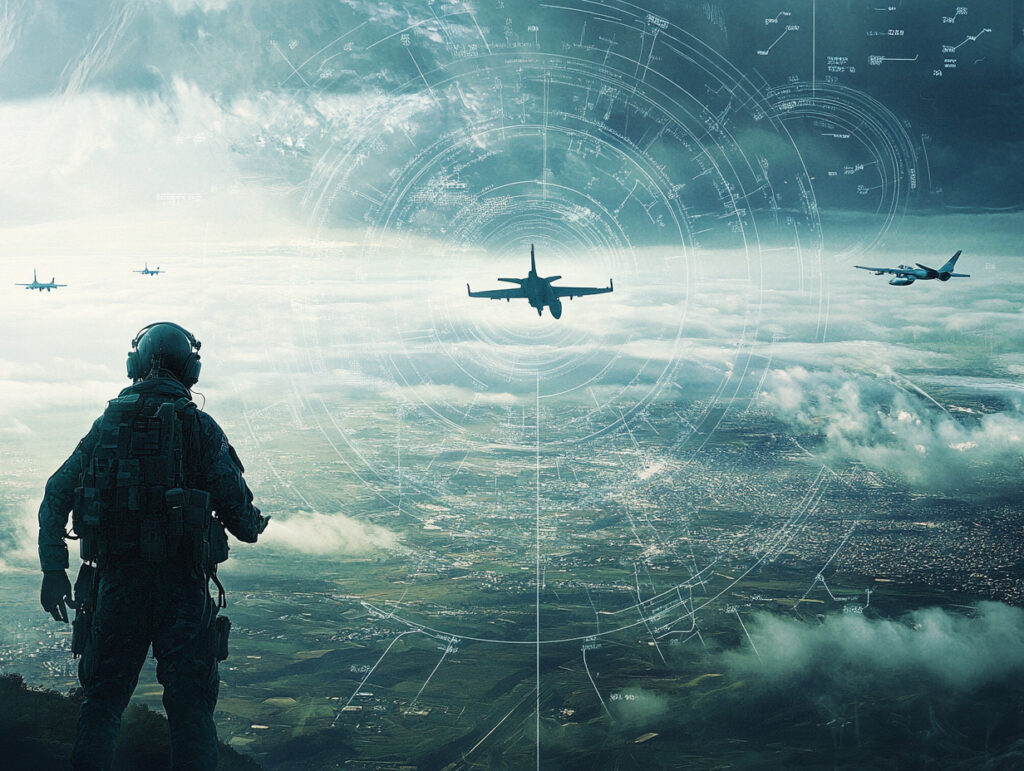
US military aircraft use tactical communications networks for secure exchanges, including UHF, VHF and SATCOM systems.
US military aircraft use sophisticated communications systems to exchange information in flight. Tactical networks, such as Link 16, enable secure, real-time transmission of data between air platforms, land forces and ships. These systems include very high frequency (VHF), ultra high frequency (UHF) and satellite communications (SATCOM). The use of artificial intelligence and drones further enhances mission effectiveness by optimising the coordination of forces. The modernisation of systems such as the F-22 is essential to guarantee air superiority.
US military aircraft communications systems
The US armed forces rely on an advanced air communications infrastructure to coordinate their actions during missions. Each aircraft is equipped with VHF and UHF radio systems, used for communication between aircraft and with air traffic controllers. These frequencies enable short- and long-range exchanges. For example, the UHF frequency (300 MHz to 3 GHz) is particularly effective for direct line-of-sight communications, while VHF (30 to 300 MHz) is preferred for longer-range civil and military communications.
Another key tool is Link 16, a tactical communications network that enables real-time data exchange between different platforms (aircraft, land forces, ships). It provides a complete and shared tactical situation thanks to a constant flow of critical information on the position of enemies, allies and targets. For example, an F-22 Raptor equipped with Link 16 can share detailed information on targets with aircraft such as the F-35, or land forces equipped with compatible systems.
These systems must be secure and encrypted to avoid any risk of compromise by the enemy. Military aircraft use advanced technologies to ensure that communications remain inviolable. For example, satellite-based SATCOM systems offer communications that are almost impossible to intercept, even in hostile environments.

The importance of real-time communications for military missions
The speed and accuracy of information transmitted during military missions are crucial to their success. This is where Command, Control, Communications, Computers, and Intelligence (C4I) comes in. This system coordinates information gathering and data transmission, and enables commanders to control operations in real time. Aircraft such as the E-2 Hawkeye play a crucial role in this area, with their surveillance and airspace management capabilities.
Thanks to these technologies, pilots and commanders on the ground have a real-time view of enemy movements and can react quickly to any threat. They can also adjust mission plans according to new data, providing essential flexibility on the battlefield.
Aircraft are also equipped with intelligence, surveillance and reconnaissance (ISR) systems, which capture and transmit real-time data on enemy positions and activities. For example, the Northrop Grumman E-2 Hawkeye uses radar and sensors to monitor vast areas and transmit this information to other units. This continuous collection of data provides a decisive advantage in terms of tactical situational awareness.
Modernising fighter aircraft communications systems
One of the current challenges is to ensure that older aircraft can communicate effectively with newer models. For example, the F-22 Raptor, a fifth-generation fighter, needs to exchange information with older aircraft such as the F-15. This challenge has led to initiatives such as the integration of Link 16 into F-22 aircraft, enabling them to share tactical data with earlier generation aircraft. These upgrades also include improving radar and navigation systems to maintain their effectiveness in a modern warfare environment.
Recent tests on the F-22 have shown that data transmission via Link 16 considerably improves the aircraft’s combat capabilities. The F-22 can now transmit high-fidelity information on air and ground targets, enhancing coordination between allied forces.
Aircraft such as the T-7A Red Hawk, which recently entered service, directly integrate these new communications systems, optimising collaboration between pilots and commanders. The use of software-defined radios (SDR) also means that frequencies can be adapted quickly, ensuring secure communication in the event of enemy jamming.
The use of artificial intelligence and drones in aerial communications
Artificial intelligence (AI) and drones are playing a growing role in aerial communications. Automated systems can manage massive amounts of data and transmit it to commanders in real time. AI is used to rapidly analyse information, propose tactical decisions and facilitate resource management.
Projects such as Boeing’s Decentralized Collaborative Planner (DCP) demonstrate the importance of AI in force coordination. This software uses artificial intelligence to analyse information in real time and help operators make rapid decisions. This avoids information overload and optimises mission effectiveness by adjusting plans based on new data.
At the same time, the use of autonomous drones equipped with ISR sensors and advanced communications systems is improving armed forces surveillance and reconnaissance. These drones can fly alongside fighter aircraft, transmit critical data on the tactical environment and even act as a relay for radio communications when aircraft are outside the direct range of tactical networks.
Technological challenges in military communications
Despite technological advances, challenges remain. One of the main problems is electromagnetic interference, used by forces such as Russia to disrupt air and ground communications. To counter this, the US military has introduced encrypted communications systems and jamming-resistant technologies such as SDR radios. These systems allow rapid frequency changes or the use of encrypted channels to ensure continuity of communications.
Another challenge is the integration of the different communications systems between the branches of the armed forces (air, land, sea). Efforts are being made to unify systems to ensure better coordination between forces. The development of commercial communications satellites, such as Starlink, is one example of a solution to provide resilient and secure communications in wartime. Starlink, used by Ukraine in 2022, has proven its effectiveness in maintaining communications even in areas where traditional infrastructures have been destroyed.
War Wings Daily is an independant magazine.